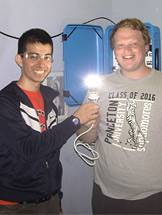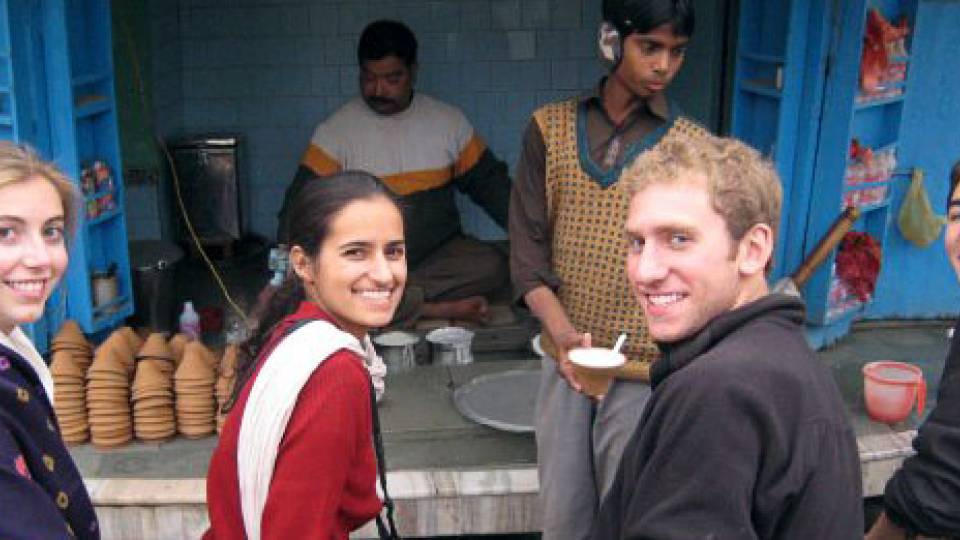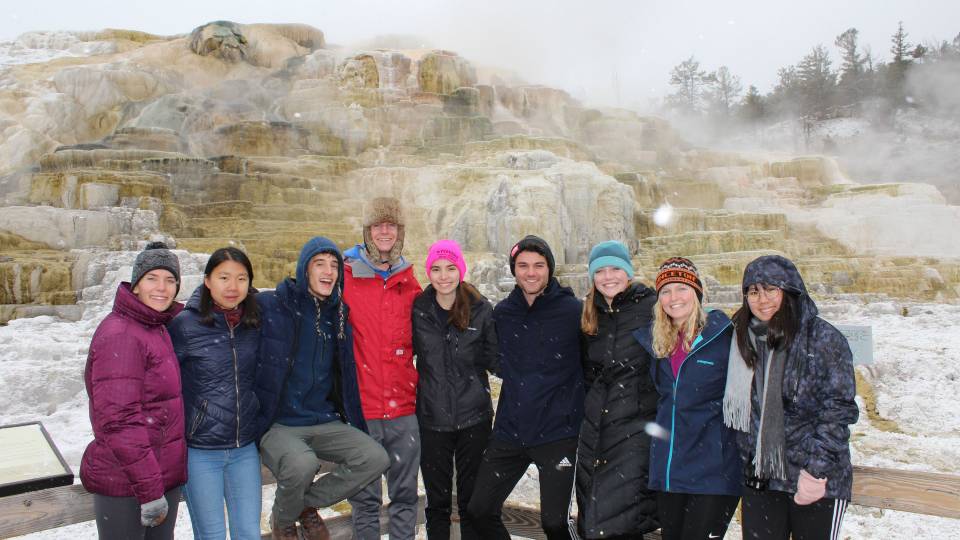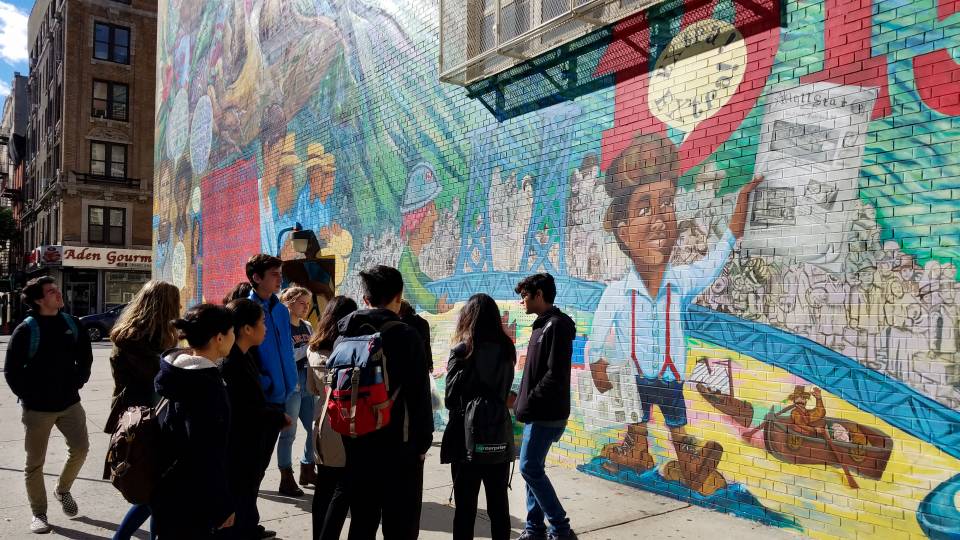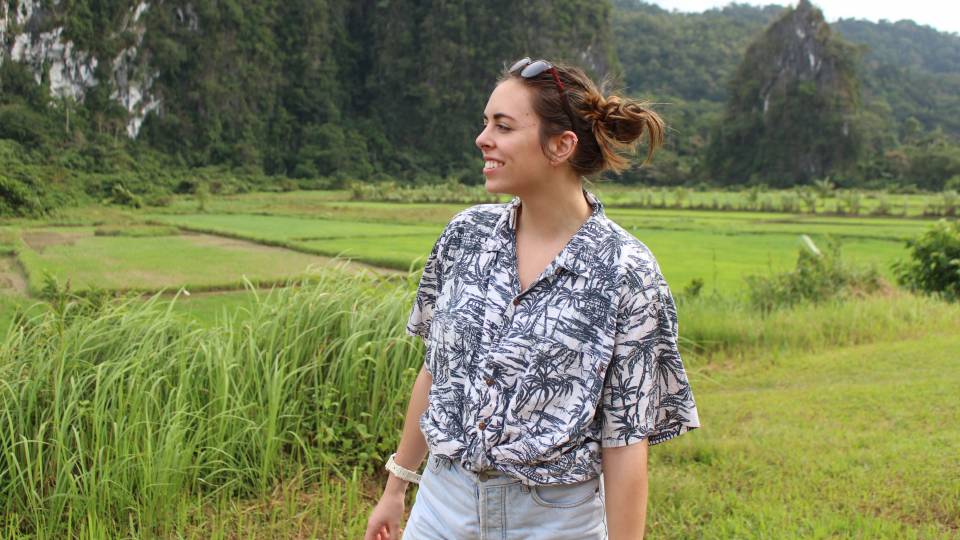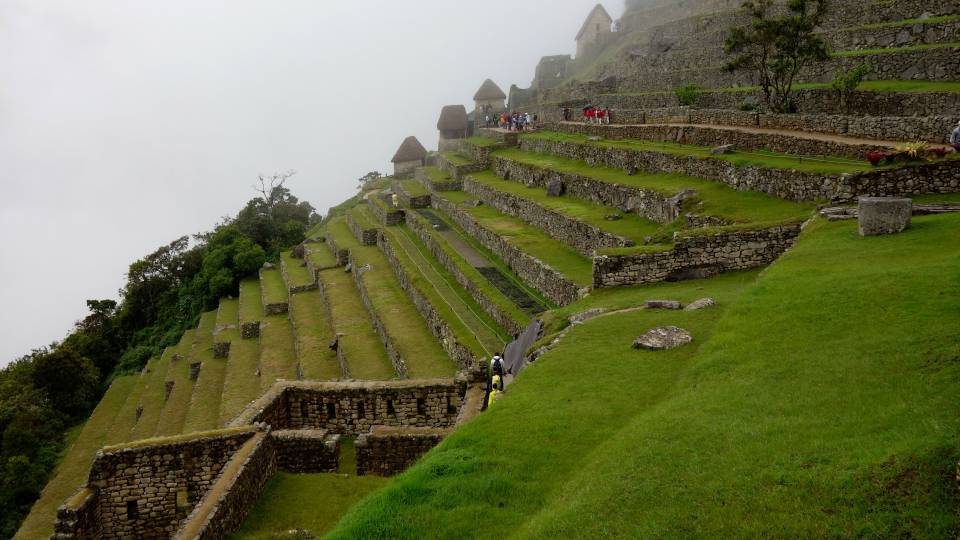With only the contents of a small plastic suitcase, seven Princeton University students were able to bring light to — and improve lives in — a remote village in Peru during their spring break March 15-22.
The students traveled to Corpani Peñas, near the historic Machu Picchu site, as part of the Pace Center for Civic Engagement's pilot international service trip. The project "Solar Sustainable Service" brought reliable, low-cost energy to the isolated community of 16 homes via a solar suitcase that the nonprofit organization We Share Solar developed.
The suitcase, which contains a portable power unit and rooftop solar panels, was installed in the community president's home, which also serves as a store and restaurant frequented by villagers. One suitcase provides enough energy for four lights and two charging stations for mobile devices.
"In two days, we installed the entire solar system," said trip co-leader Douglas Bastidas, a member of the Class of 2016. "We know that this installation will have positive impacts for the community, but I think our team benefited most from this experience. From the technical troubleshooting of the installation process with the community members, to the rich cultural exchange our team had with our host families, to the kind and generous hospitality that was common in all of our interactions with each Peruvian community."
He added: "Each experience was an integral part to an incredibly, rewarding and learning adventure for our team."
Co-leader Dallas Nan, a member of the Class of 2016, said the solar suitcase means the residents will not have to use dangerous kerosene lamps inside the restaurant and store, and will no longer have to walk for miles to find a place to charge their mobile devices.
The students chronicled their preparations for the trip and their travels on a Pace Center blog.
Kimberly de los Santos, the John C. Bogle '51 and Burton G. Malkiel '64 Director of the Pace Center, said the trip exemplified the center's interests in supporting service opportunities that are learning experiences for students and directly affect a community.
"At the Pace Center, we're dedicated to making civic engagement part of the Princeton student experience," she said. "The international service trip reinforces the University's commitment to a global presence and an international perspective, while offering powerful lessons beyond the classroom that impact both the students and community in a positive way."
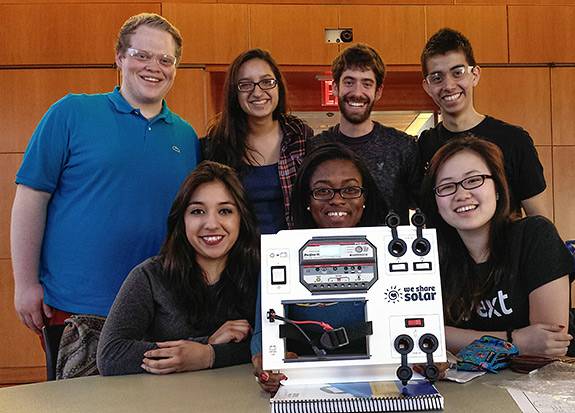
The students prepped for their trip by learning how to install the solar suitcase developed by the nonprofit organization We Share Solar. The suitcase contains a portable power unit and rooftop solar panels. Pictured are: (Back row, from left) Nan, sophomore Jackie Rambarran, senior Mark Benjamin and Bastidas; (front row, from left) freshman Victoria Navarro, freshman Lacey-Ann Wisdom and sophomore Annie Tao.
The Pace Center partnered with the Princeton Environmental Institute, Andlinger Center for Energy and the Environment, and Keller Center to extend its Breakout Princeton alternative fall and spring break programs internationally.
Bastidas and Nan proposed the solar service idea and worked with the Pace Center to plan the trip. In Peru, the team collaborated with students participating in the University's Bridge Year Program in Urubamba, and staff from Bridge Year's on-site program partner Intrax/ProWorld. Bridge Year allows a select number of Princeton students to delay the start of their freshman year in order to engage in nine months of University-sponsored service at one of five international locations.
"What's great about the Pace Center is their spirit of student leadership," Nan said. "This was our idea, and the Pace Center really encouraged us to plan every aspect of the experience. It was not just about a week in Peru. It was about understanding issues of power supply and energy demand, learning about and supporting a local community, and then coming back to campus to share what we've learned about the benefits of solar technology and international service."
De los Santos said piloting the international service trip gave students the opportunity to drive the initiative, combine service experiences on campus with academic interests, and pursue service that connects local and global issues.
"It is a trip where students learn about themselves, about the needs of an international community and how to work with that community to make a difference," she said.

(From left to right) Tao, Wisdom, Rambarran, Benjamin, Bastidas, Nan and Navarro spent March 15-22 in Peru, traveling to the remote village of Corpani Peñas to help provide the community with reliable, low-cost solar energy.
Lacey-Ann Wisdom, Class of 2017, said she knew little about solar energy or how to install a solar energy panel before she applied for the trip.
"Our team prepped for months leading up to our March departure," Wisdom said. "We learned the circuitry, practiced the actual installation of the panels in various workshops and fine-tuned the details of assembling materials and other goods."
As with any project, there were a few unexpected challenges.
"When our materials did not function properly, the owner of the house we were working on helped us to adapt the solar suitcase to the seemingly impossible conditions presented," Wisdom said. "This is just one example in which the ingenuity and flexibility of the residents who we came into contact with astounded me."
Bastidas and Nan said turning on the lights for the first time was a powerful moment.
"We finished the installation right as the sun was setting and the lights were immediately put to use," Bastidas said. "The community used the restaurant light to finish cooking a thank-you dinner for our team and we would eventually use our recently installed system to eat dinner with the community, have a great debrief discussion, reflect in our journals and wind down with card games. It was a surreal experience to use the We Share Solar suitcase so immediately and effectively after our installation."
The team left a second solar suitcase with staff from Intrax/ProWorld, who plan to work with residents to install it in a community center the village is building.
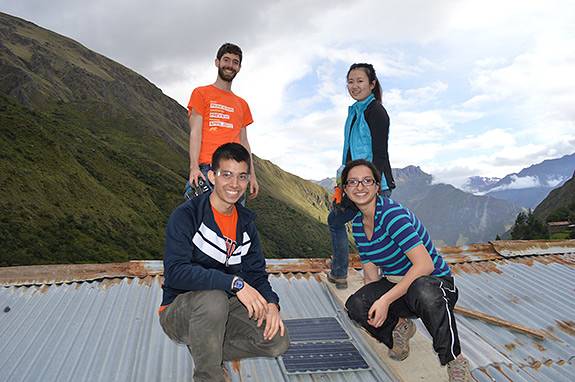
The project involved installing solar panels on the rooftop of the community president's home, which also serves as a restaurant and store frequented by villagers. The panels were connected to a portable power unit inside the home to provide energy for four lights and to charge two mobile devices at a time.
Reflecting on the trip, students said they most appreciated getting to know residents during evening meals and hikes through Incan ruins.
"What I cherished most of all was the simple pleasure of talking to my host family about my day, over delicious home-cooked Peruvian dishes," Wisdom said. "I probably spoke more Spanish in my five days in Peru than I ever have in my entire life. We traded culture and politics at dinnertime, and in our short stay, I let Peru capture my heart."
She added: "Being a part of this international breakout trip has affected my life in ways that I will probably still be discovering years from now. As a young and impressionable freshman, I feel that my few days in Peru may affect my major choice and many of my future activities on campus."
The international service team plans to give a presentation about their trip on April 19, and will host a We Share Solar suitcase community workshop where local teachers and others will learn about solar electric systems.
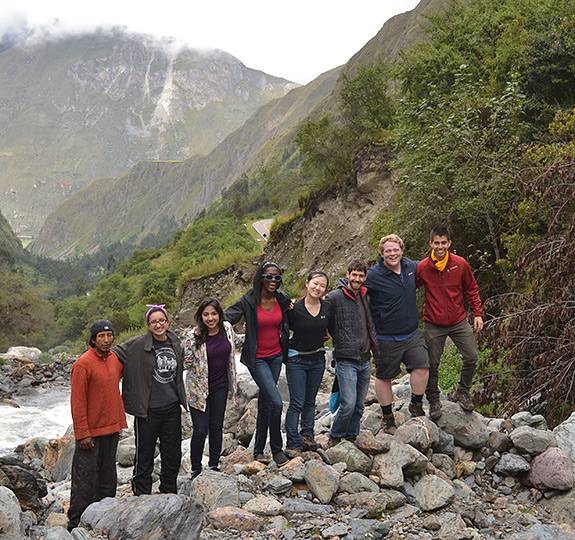
The students said their most cherished moments were getting to know local residents and exploring Peru, including a hike through Incan ruins.
